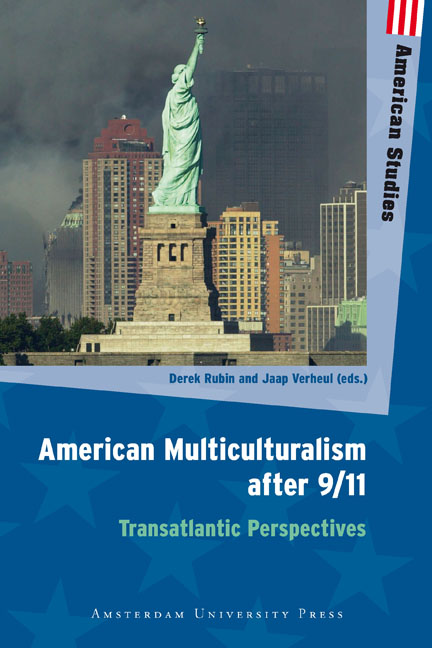Are We All Americans? 9/11 and Discourses of Multiculturalism in the Netherlands
Published online by Cambridge University Press: 21 January 2021
Summary
The “multicultural drama” has become the catchphrase in the Dutch political discourse on multiculturalism and the alleged failure of ethnic integration policy. The term was coined by the Dutch leftwing publicist Paul Scheffer in an influential essay of the same name, published in January 2000. Scheffer argues that the Dutch policy of multiculturalism has resulted in ethnic segregation and the exclusion of ethnic minorities from a collective Dutch history and identity. Although written before the terrorist attacks of September 11, 2001, the events of 9/11 reinforced the essay's political urgency. Moreover, the assassinations of the popular rightwing politician Pim Fortuyn in 2002 and the controversial filmmaker Theo van Gogh in 2004 emphasized the seriousness of the multicultural drama. Fortuyn, running on an anti-Islam platform, was murdered by a white Dutch animal rights activist just nine days before the national elections; Van Gogh was murdered by the Moroccan-Dutch Muslim extremist Mohammed Bouyeri. Together, the two murders seemed horrifying symptoms of Dutch multiculturalism in crisis, prompting conspiracy theorists to point out that Van Gogh was murdered exactly 911 days after Fortuyn. Scheffer also made an explicit connection between 9/11, the two assassinations, and the multicultural drama. “Once you accept that multicultural argument against teaching them our history, you are excluding them from collective memory, from an enormous chance for renewal,” Scheffer stated in a 2006 interview, adding that “September 11th gave many of them their narrative.”
By making a rigid distinction between “us” (the Dutch national collective) and “them” (the Muslim ethnic minorities), Scheffer implies that “our” culture can be reduced to an identity predominantly formed by a collective national history. Moreover, his statement ignores the fact that 9/11 and the assassinations of Fortuyn and Van Gogh not only gave “many of them their narrative” but also “us” a range of narratives, including some that polarize the debate, as well as others that instead challenge the rigid “us” versus “them” dichotomy. In my book Fabricating the Absolute Fake, I have analyzed the way 9/11 and the assassinations of Fortuyn and Van Gogh have been used in popular culture as part of a larger political discourse, ranging from pop songs and commercial rap songs to magazines and commercial “feel good” cinema, specifically addressing questions of national identity and multiculturalism in Dutch society.
- Type
- Chapter
- Information
- American Multiculturalism after 9/11Transatlantic Perspectives, pp. 181 - 190Publisher: Amsterdam University PressPrint publication year: 2012

